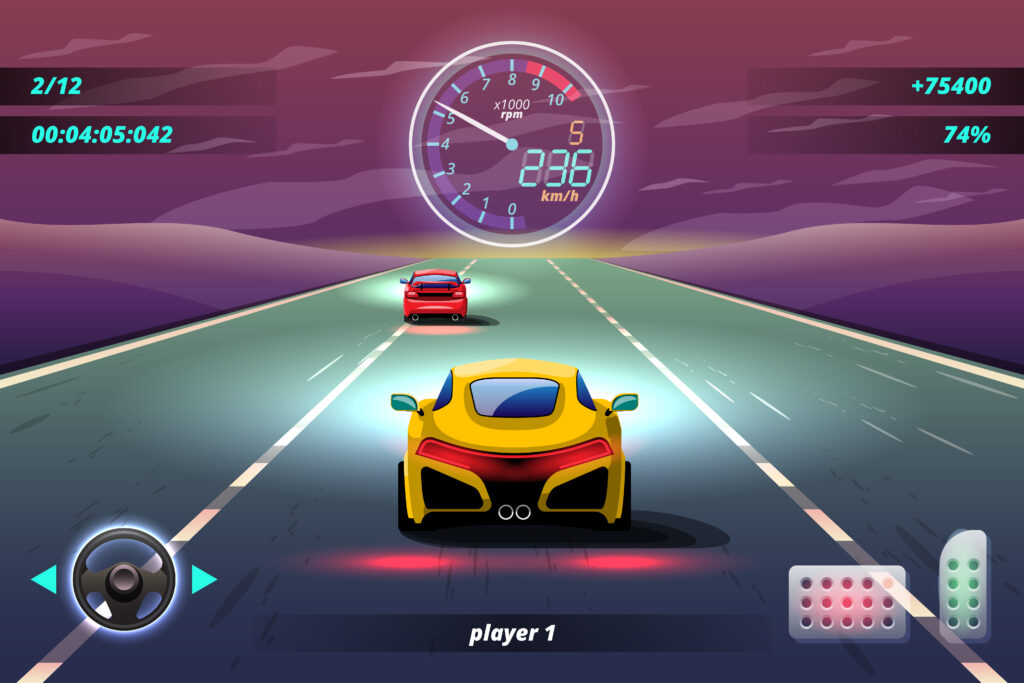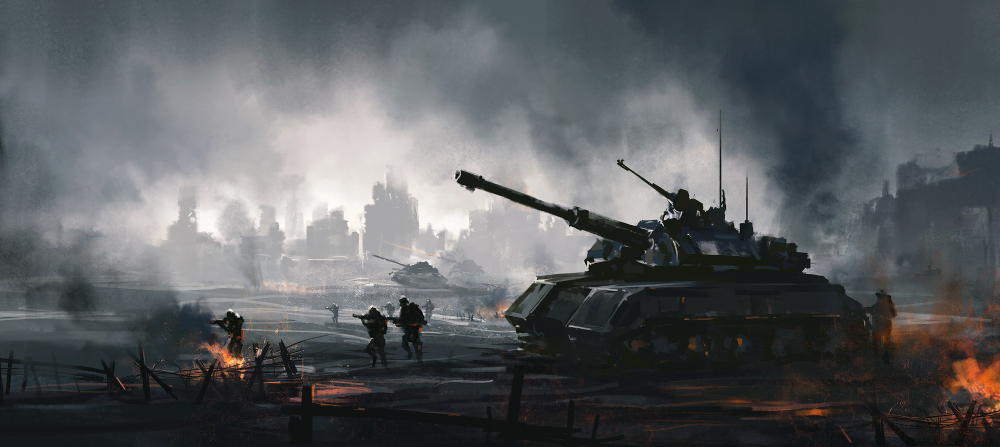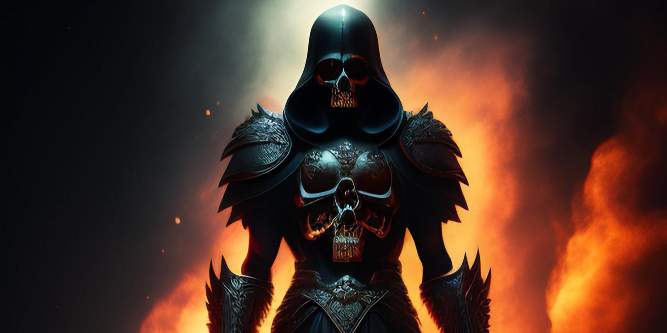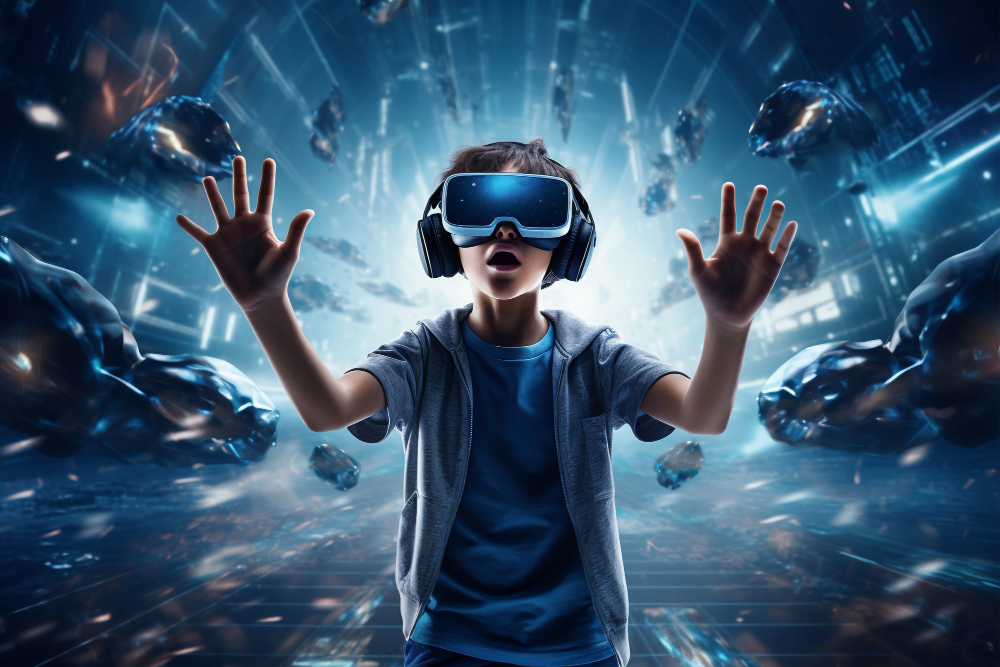Gaming, where new ideas rule, 3D models play a super important role in making games feel real. As gamers explore different platforms like consoles, PCs, phones, and VR headsets, picking between low poly and high poly 3D models is a big deal. This choice decides how good the game looks and how well it works.
Each platform brings its unique challenges and opportunities, making the world of 3D models quite interesting. Behind the scenes of every captivating game, 3D models play a silent yet powerful role. If game developers want to make cool virtual worlds that people will always remember, they need to know a lot about how these 3D models work.
When game creators start making their games, they face a tough choice: should they use high poly or low poly models? This decision affects how the game looks and how well it runs on different devices. In this blog, we’ll explore this decision and uncover the details that make games special.
Understanding 3D Models in Gaming
In video games today, the important thing is 3D models. These are like digital building blocks that create the whole game world. They decide how things look and how players can interact with them. Unlike flat pictures (2D), 3D models make games feel real and exciting, making players feel like they’re part of the game.
In games, 3D models are like digital versions of things in a 3D world, such as characters, stuff, and even the whole background. The game uses these models to make the game world look cool and exciting. They’re not just pictures; the game makes them move and act, so players can really get into the game and do things like explore and interact with the surroundings.
Overview of Gaming Platforms: Console, Mobile, PC, and VR gaming
Console:
Gaming consoles, such as PlayStation and Xbox, provide a standardized environment with fixed hardware specifications. This consistency allows developers to optimize 3D models for a specific set of capabilities, ensuring a uniform gaming experience for console users.
Mobile:
Mobile gaming, on smartphones and tablets, introduces a different set of challenges. The varying hardware capabilities among mobile devices require developers to create 3D models that are not only visually appealing but also optimized for performance on a broad range of devices.
PC:
Personal computers offer a flexible gaming environment with a wide spectrum of hardware configurations. Here, developers can push the boundaries of visual fidelity, utilizing high-quality 3D models that take advantage of powerful GPUs and CPUs.
VR (Virtual Reality):
VR gaming immerses players in a virtual world, demanding a higher level of precision in 3D models. The sense of presence and immersion in VR relies heavily on the realistic representation of objects and environments, making the choice of 3D models crucial for a convincing experience.
Choosing 3D models for games involves finding the right balance between how good they look and how well the game runs. The details in the models, like the number of polygons, how much detail they have, and the quality of their textures, directly affect how the game performs on different devices.
Game Performance:
How well the 3D models work influences how smoothly the game runs. Models with lots of polygons may look amazing, but they can put a strain on the device, causing lag and lower frame rates. On the other hand, models with fewer polygons are designed to run smoothly, making them better for devices with limited resources.
Visual Quality: How good the game looks depends on the quality of its 3D models. Models with lots of polygons can show intricate details, making the game look more realistic. But, newer techniques allow models with fewer polygons to still look great, especially when combined with smart texturing and shading methods.

Low Poly vs. High Poly 3D Models: Customization for Gaming Platforms
Characteristics of Low Poly 3D Models
Low poly models are characterized by their simplicity, featuring a reduced number of polygons compared to high-poly counterparts. This enhances performance on resource-limited platforms and contributes to a distinct, stylized aesthetic.
Low Poly Models:
These models prioritize efficiency, making them suitable for mobile devices and consoles where hardware resources are more constrained. They often feature smooth surfaces and minimalistic details, allowing for faster rendering.
Low Poly Assets:
Game developers leverage low poly assets for constructing environments, ensuring that the overall scene remains visually pleasing while maintaining optimal performance.
Polygon 3D Models:
The term “polygon” refers to the individual flat surfaces that make up a 3D model. Low poly models use a conservative number of polygons, striking a balance between visual appeal and performance.
Characteristics of High Poly 3D Models
High poly models, in contrast, are characterized by their intricate detail and a higher number of polygons. These models are typically reserved for platforms with robust hardware capabilities, such as high-performance PCs, where their visual prowess can be fully appreciated.
High Poly:
Models with a higher polygon count excel in capturing intricate shapes and detailed surfaces, making them ideal for games that prioritize realism and visual fidelity.
High Poly Character Model:
Characters are frequently the focal point of a game; moreover, high poly character models empower developers to craft lifelike protagonists and antagonists. This heightened level of detail significantly contributes to a more immersive narrative experience.
Choosing Between Low Poly and High Poly 3D Models on Console, Mobile, PC, and VR
The decision to opt for low poly or high poly models depends on the target platform and the desired gaming experience.
Console: Consoles with standardized hardware can seamlessly incorporate a balanced mix of both low and high poly models. Developers meticulously assess the hardware capabilities, aiming for an optimal blend that guarantees a visually appealing and smooth gaming experience.
Mobile: Resource constraints on mobile devices necessitate a leaning towards low poly models. Developers must carefully balance visual quality with performance, ensuring that the game runs seamlessly across a broad range of mobile devices.
PC: The flexibility of high-performance PCs allows developers to push the boundaries of visual fidelity with high poly models. Here, the emphasis is on delivering a visually stunning experience that takes full advantage of powerful hardware.
VR: Virtual reality demands a delicate balance between realism and performance. While high poly models contribute to a more immersive VR experience, developers must optimize them to prevent motion sickness and maintain a consistently high frame rate.

Console Gaming: Striking the Right Balance
Gaming consoles, present both opportunities and challenges for developers when it comes to 3D models. To strike the right balance, specific considerations must be taken:
Optimization for Consistent Performance:
Console gaming has fixed hardware specifications, allowing developers to optimize 3D models for consistent and predictable performance. This optimization involves finding the spot where visual quality meets the console’s capabilities without sacrificing playability.
Texture and Detail Management:
While consoles offer a more powerful hardware setup compared to mobile devices, developers still need to manage texture sizes and model details efficiently.
Level of Detail (LOD) Implementation:
Implementing LOD is crucial on consoles. It involves dynamically adjusting the level of detail in 3D models based on their distance from the player’s viewpoint. This technique helps manage system resources efficiently, particularly in open-world games with expansive environments.
For example: The critically acclaimed game “Breath of the Wild” for Nintendo Switch masterfully combines low poly and high poly models. Distant landscapes utilize low poly models to maintain a smooth frame rate, while main characters and key locations boast high poly models for a visually rich experience.
Mobile Gaming: Optimizing Performance for 3D Models
Mobile gaming presents a unique set of challenges and opportunities for 3D models due to the diverse range of devices and their varying hardware capabilities:
Diverse Hardware Ecosystem:
Mobile game developers must navigate the diverse ecosystem of smartphones and tablets, each with its own processing power and graphics capabilities.
Battery and Thermal Constraints:
Mobile devices are constrained by battery life and thermal limitations. Therefore, optimizing 3D models for efficiency becomes crucial to ensure that games run smoothly without draining the device’s battery or overheating.
Touchscreen Controls:
Mobile games often rely on touchscreen controls, influencing the design of 3D models to accommodate responsive and intuitive interactions.
Demonstrating the Impact of 3D Models Choice on Mobile Gaming Performance
The choice between low poly and high poly models significantly impacts the performance of mobile games:
Low Poly for Smooth Performance:
Games like “Crossy Road” adeptly leverage low poly models to uphold smooth performance on a broad array of mobile devices. The simplified yet charming aesthetics significantly contribute to an enjoyable gaming experience without overburdening device resources.

High Poly for Immersive Experiences:
On high-end mobile devices, games like “Asphalt 9: Legends” strategically utilize high poly models to deliver visually stunning graphics, creating a more immersive gaming experience by leveraging advanced GPUs.
For example: “Clash Royale” employs a strategic mix of low poly character models and high poly effects. This combination ensures that the game maintains a consistent frame rate during intense battles. While “Monument Valley” demonstrates the beauty of minimalistic, low poly models. The game’s Escher-inspired architecture and characters are designed with simplicity, contributing to its unique visual style and ensuring optimal performance on a broad range of mobile devices.
PC Gaming: Flexibility of 3D Model Choices
High-performance PCs offer game developers unparalleled flexibility in choosing and rendering 3D models.
High-Resolution Textures:
PCs can handle high-resolution textures, allowing developers to create detailed 3D models that showcase intricate surface details.
Advanced Rendering Techniques:
PCs support advanced rendering techniques such as ray tracing, enabling developers to achieve realistic lighting, shadows, and reflections in their 3D models.
VR and Multiple Displays:
PC gaming, furthermore, extends beyond traditional monitors; with the rising popularity of VR headsets and multi-monitor setups, developers can craft 3D models optimized for these immersive experiences.
Weighing the Pros and Cons of High Poly Versus Low Poly Models in PC Gaming
The choice between high poly and low poly models in PC gaming involves weighing the benefits and drawbacks of each:
High Poly for Realism:
Games like “Cyberpunk 2077” leverage high poly models to achieve a level of realism that immerses players in detailed urban environments. This realism is particularly impactful on high-performance gaming rigs.
Low Poly for Artistic Styles:
Conversely, games like “Stardew Valley” prioritize a low poly aesthetic, relying on charming simplicity to convey an engaging farming experience. This choice aligns with the game’s artistic style and contributes to its widespread appeal.
For example: “The Witcher 3” strikes a balance between high poly character models and optimized environmental assets. This combination ensures that the game delivers a visually stunning open-world experience without compromising performance. “Minecraft” showcases the power of low poly models in fostering creativity. The game’s blocky aesthetic not only simplifies the rendering process but also allows for expansive, procedurally generated worlds.
VR Gaming: Immersive Experiences and Performance
Virtual Reality (VR) gaming introduces a transformative dimension to the gaming experience, requiring specific considerations for 3D models:
Realistic Scale and Proportion:
In the realm of VR, players perceive the virtual environment in three dimensions. Here, 3D models must adhere to realistic scale and proportion, ensuring an immersive experience while preventing disorientation.
Optimized Detail for Close Interaction:
VR encourages close interaction with virtual objects. 3D models must be optimized for high detail, especially when they are in close proximity to the player, to enhance the sense of presence.
Smooth Animations for Comfort:
Ensuring smooth and realistic animations is crucial to prevent motion sickness in VR. Additionally, 3D models should be rigged and animated carefully, ensuring that movements seamlessly align with the player’s expectations.
Analyzing the Impact of Model Choice on VR Gaming Immersion
The choice between low poly and high poly models in VR gaming has a profound impact on the overall sense of immersion:
Low Poly for Performance:
In VR, low poly models are often favored to uphold a consistently high frame rate, a crucial factor in preventing motion sickness. The simplified geometry of these models significantly contributes to smoother performance on VR platforms.
High Poly for Realism:
However, high poly models can enhance the realism of VR environments, providing detailed textures and intricate designs that elevate the overall visual experience. Developers must balance this with the performance demands of VR hardware.
For example: “Beat Saber” is a rhythm-based VR game that utilizes low poly models effectively. The simplistic yet engaging design of the game’s blocks and characters ensures a smooth and comfortable experience. In contrast, “Half-Life: Alyx” leverages high poly models to create a visually stunning VR experience. The detailed environments and characters contribute to a sense of realism.

Decision-Making Factors for Game Developers
Rendering Techniques:
Understanding advanced rendering techniques, such as physically based rendering (PBR) and ray tracing, allows developers to enhance the visual quality of their games.
Optimization Strategies:
Implementing efficient optimization strategies, such as LOD systems, texture streaming, and occlusion culling, is paramount. These measures guarantee optimal performance across various platforms, ensuring a seamless and immersive gaming experience.
Compatibility Testing:
Thorough testing across different hardware configurations is essential to identify and address potential performance issues on diverse platforms.
Platform-Specific Optimization:
Tailoring 3D models for each platform’s capabilities ensures an optimal balance between visual quality and performance. Simultaneously, this process involves adjusting texture resolutions, polygon counts, and other parameters, ultimately optimizing the gaming experience.
Dynamic Quality Adjustments:
Implementing dynamic quality adjustments, such as dynamically changing the level of detail based on performance metrics, allows games to adapt to the capabilities of the user’s hardware.
Conclusion
The choice between high poly and low poly 3D models is a multifaceted decision. Developers must weigh factors such as platform constraints, audience preferences, and performance requirements to make informed choices. Moreover, as the gaming industry continues to evolve, the emergence of innovative platforms becomes essential for developers. Introducing 3Daily, a platform poised to meet all gaming needs, from assets to characters, encompassing both low poly and high poly options. This platform aims to streamline the creative process, providing a comprehensive solution for developers to bring their visions to life. Stay tuned for an exciting journey into a realm where gaming meets convenience and creativity.



